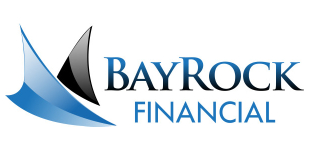Risk Profile = Your Risk Number

A risk profile is an evaluation of an individual’s willingness and ability to take risks. It can also refer to the threats to which an organization is exposed. A risk profile is important for determining a proper investment asset allocation for a portfolio. Organizations use a risk profile as a way to mitigate potential risks and threats.
Risk Profile Key Points
-
Your risk profile is an evaluation of your willingness and ability to take risks.
-
Your risk profile is important for determining a proper investment asset allocation for your portfolio.
-
BayRock uses your risk profile as a way to manage your expectations and your investment portfolio.
Understanding Your Risk Profile
Your risk profile identifies the acceptable level of risk you are prepared and able to accept. A corporation’s risk profile attempts to determine how a willingness to take on risk (or an aversion to risk) will affect an overall decision-making strategy. The risk profile for an individual should determine that person’s willingness and ability to take on risk. Risk refers to portfolio risk.
Risk can be thought of as the trade-off between risk and reward, which is to say the tradeoff between earning a higher return or having a lower chance of losing money in your portfolio.
Your willingness to take on risk refers your risk aversion. If you express a strong desire not to see the value of your account decline and is you’re willing to forgo potential gains to achieve your objective of avoiding risk, you would have a low willingness to take on risk and you will be considered risk-averse.
Get Your Risk Number
If you want the highest possible return—and are willing to endure large swings in the value of your account to achieve that higher reward—you would have a high willingness to take on risk and your risk number would be higher.
Your ability to take risks is evaluated through a review of your assets and liabilities. If you have many assets and few liabilities you would likely have a high ability to take on risk. On the other hand, if you have few assets and high liabilities you would have a lower ability to take on risk.
For example, an individual with a well-funded retirement account, sufficient emergency savings and insurance coverage, and additional savings and investments (with no mortgage or personal loans) likely has a high ability to take on risk.
A person’s willingness and ability to take on more risk may not always match up. For example, the individual in the example above with high assets and low liabilities may have a high ability to take on risk, but may also be conservative by nature and their risk number will be lower based on their unwillingness to take on risk.
Risk Profile Alignment
At BayRock, Your Risk Profile is created when you complete our 5 Minute Risk Survey. Our RiskAlyze questionnaire generates a score – Your Risk Number – which is based on your answers to the survey questions.
Asset allocation is considered one of the most important determinants of your portfolio’s returns and asset allocation will directly impact the risk in your portfolio. Your Risk Number helps BayRock manage your investments in alignment with your tolerance for risk.


